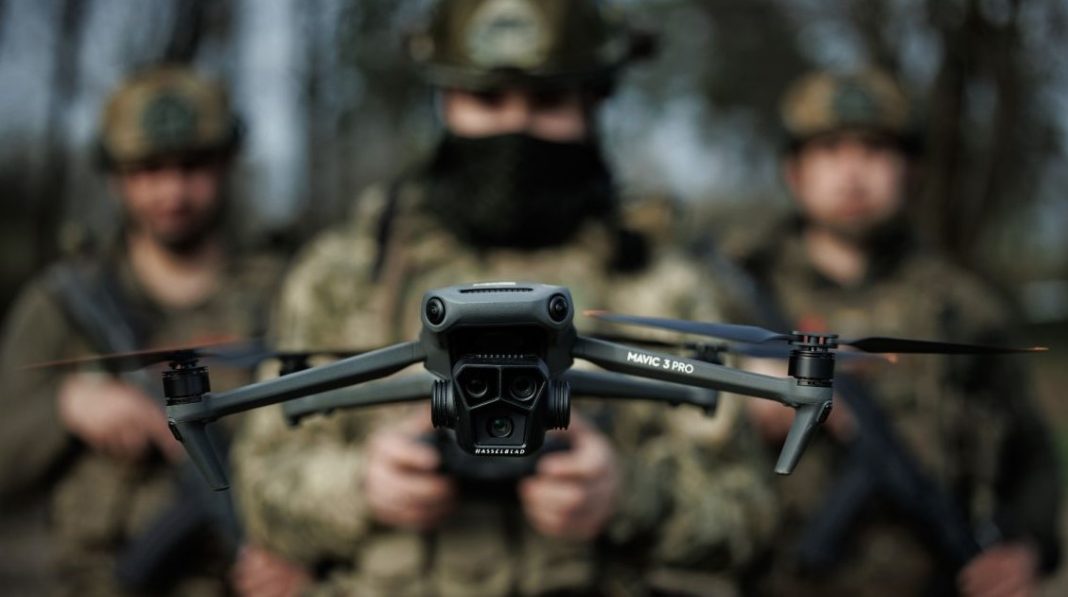Mexican intelligence services raised alarms earlier this summer after discovering that members of Mexican drug cartels had joined the Ukrainian International Legion. Unlike volunteers who joined out of solidarity, these individuals reportedly sought advanced combat drone training to bring the skills back to criminal operations in Mexico.
Mexican Cartels Exploit War Zone for Combat Drone Training
Ukraine’s Security Service, alongside military intelligence, launched investigations into Spanish-speaking units of the Legion to identify alleged cartel members. Reports indicate that some cartel-linked fighters arrived through private security firms in Latin America. At least three former members of the Colombian FARC reportedly entered Ukraine using Panamanian and Venezuelan documents to avoid scrutiny.
Officials emphasized that these fighters actively sought to learn tactics for FPV, or first-person view, combat drones. Ukraine has become a major hub for modern combat drone warfare. Ukrainian officers pointed out that while they welcomed volunteers in good faith, some participants deliberately aimed to acquire knowledge on operating low-cost combat drones for combat purposes. Experts confirmed that fighters gain battlefield experience with combat drones, which provides skills that they cannot acquire elsewhere, giving returning cartel members a significant tactical advantage.
Massive 50,000 Kg Chemical Bust at U.S. Border Exposes Chinese Link to Deadly Mexican Drug Cartels
Drone warfare analysts warned that even a small number of trained fighters returning home could deliver major operational gains to organized crime. “There is no substitute for combat experience. If a cartel sends fifty men and twenty return with battlefield knowledge, that already gives them a major gain,” one analyst reported.
Cartels’ History with Combat Drones
The involvement of cartels with combat drones is not a new development. During the early 2010s, Mexican drug gangs began experimenting with commercial drones to smuggle contraband. The release of DJI’s Phantom drone in 2013 made drone technology affordable and widely accessible. Initially, drones were used to deliver drugs into prisons and later to ferry narcotics across the U.S.-Mexico border.
Between 2012 and 2014, U.S. authorities recorded roughly 150 drone smuggling incidents, though experts suggest the real number was likely much higher. By 2020, tens of thousands of drone flights were reported near the U.S.-Mexico border, showing how quickly cartels adopted the technology. Some months saw thousands of drone incursions, indicating systematic use by organized crime networks.
U.S. Targets Weapons Suppliers Fueling Mexican Cartels in an Explosive Crackdown
By 2017, cartels escalated from smuggling to weaponizing drones. Law enforcement seized the first armed combat drone, a quadcopter modified with explosives. In Mexico, Michoacán became a hotspot for drone warfare, with groups like CJNG pioneering bomb-equipped combat drones in battles against rival cartels, vigilante groups, and Mexican security forces. Last year, authorities confirmed that combat drones had killed soldiers, marking a serious escalation in cartel tactics.
International Funding and Global Implications
The advanced combat drone training accessed in Ukraine carries wider implications. European Union funds aimed at supporting Ukrainian military programs and advancing combat drone technology may inadvertently aid criminals. Authorities and program managers have invested millions of euros in training operators and developing combat drone capabilities, yet some unintended actors appear to be accessing this knowledge.
Sheinbaum rejects U.S. airstrike talk on cartels; vows to defend Mexico sovereignty
Experts emphasize that gaining combat experience with combat drones provides unique skills. Cartel members who train in active war zones acquire abilities that instructors cannot reproduce in classrooms or controlled environments. Even a few trained individuals returning to Latin America could significantly strengthen cartel operations. The combination of affordable combat drones, battlefield experience, and advanced tactics represents a concerning evolution in organized crime methods.
Ukrainian authorities continue investigations to identify foreign volunteers with criminal links and to prevent the misuse of military technology. At the same time, Mexican intelligence agencies remain vigilant, monitoring the movement of trained individuals back to Latin America and assessing potential threats.
